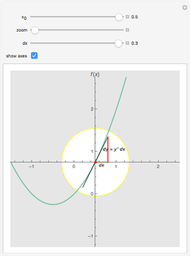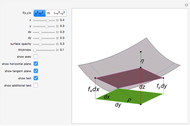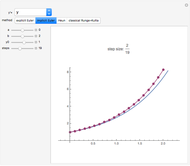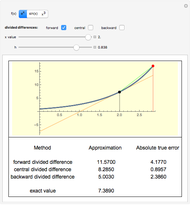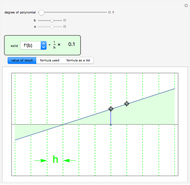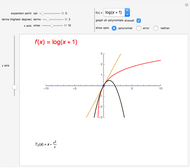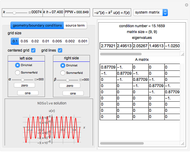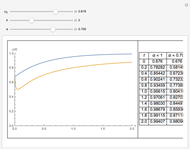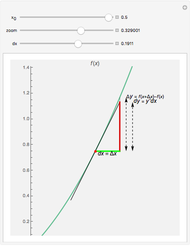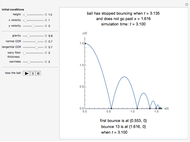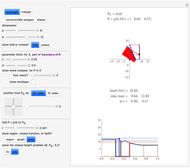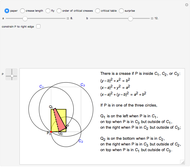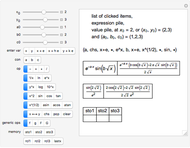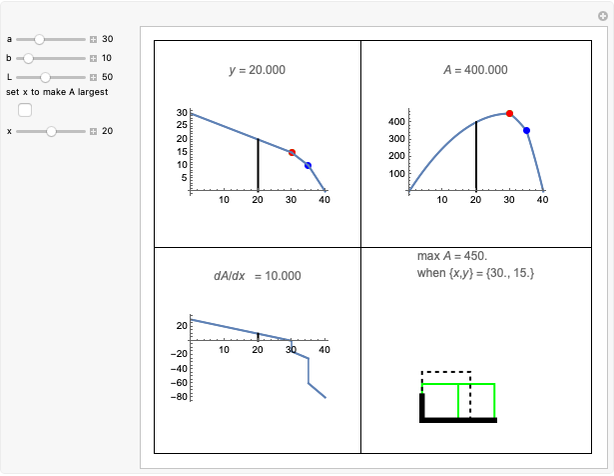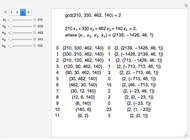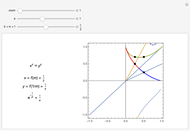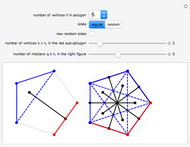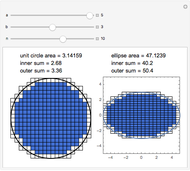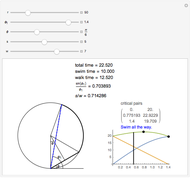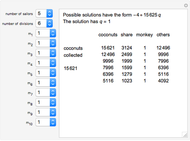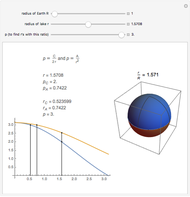Automatic Differentiation

Requires a Wolfram Notebook System
Interact on desktop, mobile and cloud with the free Wolfram Player or other Wolfram Language products.
This is a dual number expression RPN (reverse Polish notation) calculator for automatic differentiation, modeled on an old-style scientific calculator. Dual numbers are numbers of the form  , where
, where  ,
,  are real and
are real and  . (
. ( is displayed with
is displayed with  and
and  in adjacent boxes. Use the calculator to calculate an arithmetic expression in
in adjacent boxes. Use the calculator to calculate an arithmetic expression in  and reals
and reals  ,
,  , and
, and  ). Clicking a value puts the value on top of a pile. Clicking an "op" applies the "op" to the top member(s) of the pile as argument(s), and replaces them on the pile with its value. This is the RPN method of evaluation. The list of buttons clicked will be the reverse Polish notation for the expression. If the result is
). Clicking a value puts the value on top of a pile. Clicking an "op" applies the "op" to the top member(s) of the pile as argument(s), and replaces them on the pile with its value. This is the RPN method of evaluation. The list of buttons clicked will be the reverse Polish notation for the expression. If the result is  for a function
for a function  , its value will be
, its value will be  . Thus,
. Thus,  is calculated "automatically". Moreover, this will be the result if
is calculated "automatically". Moreover, this will be the result if  is any function computable by the calculator. In fact,
is any function computable by the calculator. In fact,  . It is as if
. It is as if  were expanded in a Maclaurin series in
were expanded in a Maclaurin series in  , since
, since  .
.
Contributed by: Roger B. Kirchner (September 2009)
Open content licensed under CC BY-NC-SA
Snapshots
Details
The calculator works by extending built-in functions  of one or two real variables to duals by
of one or two real variables to duals by  and
and  . The chain rule implies these relations hold for every computable function.
. The chain rule implies these relations hold for every computable function.
For example, if  and
and  , then
, then  .
.
In Dual Number (Wolfram MathWorld), a dual number is a number of the form  , where
, where  and
and  are real, and
are real, and  is a matrix such that
is a matrix such that  , such as
, such as 
Our calculator represents the dual number  as the expression
as the expression  , with operations defined by
, with operations defined by
 ,
,
 ,
,
 , which defines negation (
, which defines negation ( ) and hence subtraction,
) and hence subtraction,
 for real
for real  , which defines reciprocal (
, which defines reciprocal ( ) and hence division,
) and hence division,
 , for functions
, for functions  of one variable,
of one variable,
 for functions
for functions  of two variables,
of two variables,
 .
.
These rules are implemented in Mathematica using "up values". With operations thus overloaded, the calculator is implemented as if it were defined only for reals.
References
[1] D. Piponi, "Automatic Differentiation". A Neighborhood of Infinity. (Jul 28, 2005) blog.sigfpe.com/2005/07/automatic-differentiation.html.
[2] L. B. Rall, "The Arithmetic of Differentiation," Mathematics Magazine, 59(5), 1986, pp. 275–282.
[3] R. D. Neidinger, "Automatic Differentiation and APL," The College Mathematics Journal, 20(3), 1989 pp. 238–251.
[4] R. D. Neidinger, "Introduction to Automatic Differentiation and MATLAB Obect Oriented Programming," SIAM Review, 52(3), 2010 pp. 545–563.
Also see the Wikipedia entries for Dual number and Automatic differentiation.
Permanent Citation


































